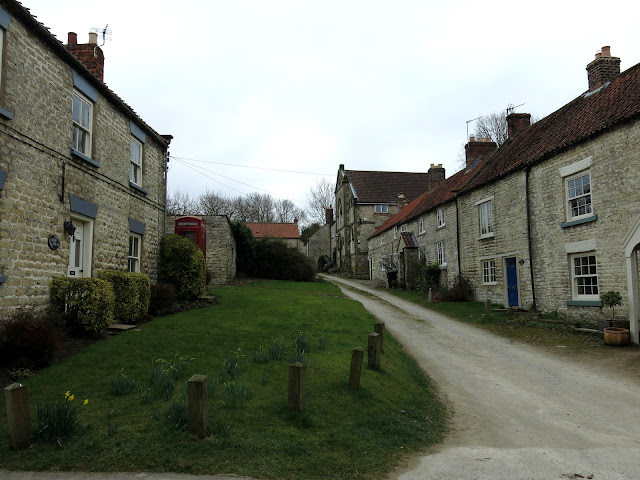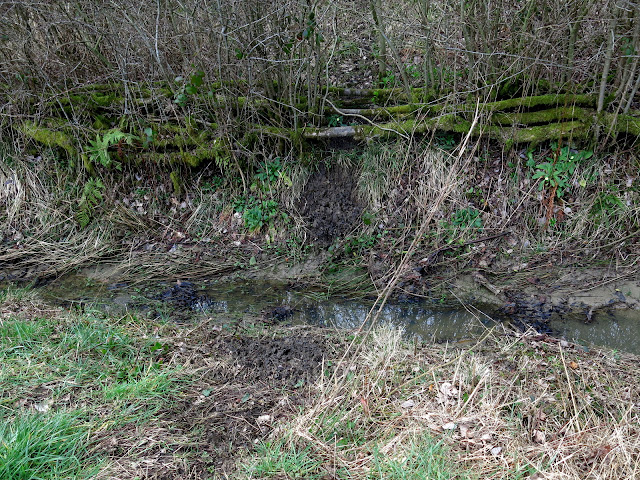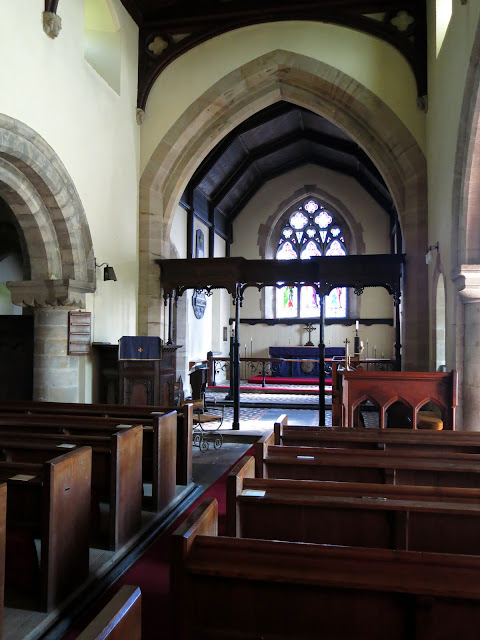Boltby to Gormire Lake and Whitestone Cliff
7 miles Cold and dry
A very cold day following a couple of windy days meant the going would be good underfoot today.
We approached Boltby from the A19 Knayton turn off and parked at a small designated car park at the end of the village.
Last time we parked here we admired an old elm tree with a tree house and I threatened to climb it on our next visit. This was not to be as it has been blown over and was lying forlornly in the field next to the car park. On the credit side this did mean we now had an unobstructed view over to Boltby Scar.
 |
| Today's walk from The Walker's Guide to the Hambleton Hills |
 |
| Old elm tree in January 2016 |
 |
| The elm tree today |
We walked back down the road towards Boltby where we took the first left into a lane. Tom Scott Burns explains that Boltby is of great antiquity and is mentioned in the Domesday Book as the property of Hugh, son of Baldric.
 |
| Approaching the left turn at Boltby |
 |
| The Old School House, Boltby |
 |
| New (to us) weather vane at Boltby |
 |
| Labradors live at this house in Boltby |
We dropped down to Greendale Farm and continued around the side of a hill to reach Tang Hall farm where we turned left just before the buildings.
 |
| Circumnavigating Greendale Farm |
 |
| King of the Hill at Greendale Farm |
 |
| Approaching Tang Hall |
 |
| Tang Hall Farm, turn left at the fence |
We were now walking on the old coach road across Huggon Howl to Southwoods Hall, although it is now just a grassy path.
Reaching the gates of Southwooods Hall we turned onto a forest track into South Woods, which we followed to reach Southwoods Lodge.
 |
| Through the gate to Huggon Howl |
 |
| First view of Southwoods Hall |
 |
| The green coach road runs to the right of the hedge |
 |
| Southwoods Lodge |
On reaching the lodge we followed the track straight ahead through Garbutt Wood to reach Gormire Lake where we sat to enjoy our coffee and scones, watching gliders and their tow planes busy in the sky above us.
 |
| Through Garbutt Wood |
 |
| Swans near the far bank of Gormire Lake |
 |
| A good spot for a picnic |
 |
| Tow plane and glider from nearby Sutton Bank |
There
are two terraces around Gormire and TSB explains that these were once
shorelines when the lake was much deeper. Its is often described as
bottomless but is actually about 27 feet deep in the centre and covers about twenty six acres. Tradition has it that a town stood here which was destroyed in an earthquake, but
the lake is actually the result of a glacial overflow channel being
blocked by a landslip, hence its position up a hillside. No streams
flow from it and its waters are mainly supplied by rain and diminish
with evaporation. A major landslip happened here on the 25th March 1755
which was described by Rev John Wesley as 'like many cannons or rolling
thunder'.
Leaving the lake we climbed straight up through Garbutt Wood to reach Sutton Brow. This is a steep half mile diagonally up the side of the bank and we were much warmer by the time we reached the top.
From here we had a fine view back to Gormire Lake and to the left over towards Roulston Scar. After catching our breath we set off past Whitetone Cliff, still looking down at the lake from various vantage points.
 |
| A long climb to Sutton Brow... |
 |
| ... through Garbutt Wood |
 |
| Gormire from Sutton Brow |
 |
| Roulston Scar from Sutton Brow |
 |
| Whitestone Cliff |
 |
| Gormire from Whitestone Cliff |
 |
| Clive enjoying the view from Whitestone Cliff |
We now had a three mile walk along the ridge, passing the remains of several tumuli to our right with fine views over Boltby to our left.
Eventually we passed by the remains of an old hill fort and quarry and reached the derelict High Barn where we left the ridge, turning left to descend towards Boltby.
Tom Scott Burns explains that the
fort originally had a D shaped rampart enclosing three acres. Gold
earrings from the early Bronze Age have been unearthed, along with
pottery from an earlier culture, probably Neolithic.
As we followed the path down we heard the guns of a shoot somewhere below us but couldn't see exactly where.
 |
| Boltby from Boltby Scar |
 |
| Following the ridge for three miles |
 |
| Remains of hill fort and quarrying, High Barn in the distance |
 |
| Looking back at hill fort and Boltby Scar |
 |
| High Barn |
We followed a sunken path or hollow lane and for a while could see the tops of the Pennines which were covered in snow.
Our path zig zagged down past Hesketh Grange Farm, over a couple of bridges and then steeply uphill, back towards Boltby and our car.
When we reached Boltby we saw the shoot's chuck wagon being drawn by a tractor, ready for the guns to have a warming drink. Nearby was a quad vehicle carrying the 'bag', mainly pheasants it would seem.
There is no pub in Boltby so it was necessary to adjourn to The Queen Catherine in Osmotherley to properly discuss today's fine walk.
 |
| Starting to descend to Boltby |
 |
| Leaving the main path near Hesketh Grange |
 |
| Across a gated bridge |
 |
| Then a wooden bridge |
 |
| 'The Bag' |






































































































